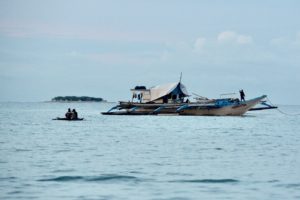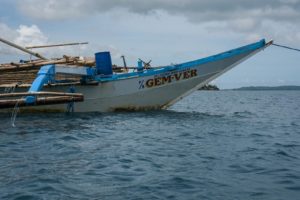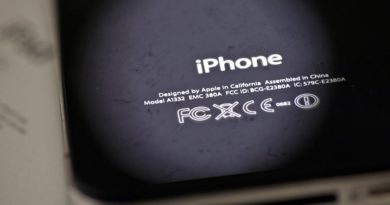EDITORIAL: Remember Gem-Ver
EDITORIAL- COLUMNS
In last week’s online summit of the Association of Southeast Asian Nations, President Duterte called on countries with competing claims in the South China Sea to “refrain from escalating tensions and abide by responsibilities under international law, notably the 1982 Unclos or the United Nations Convention on the Law of the Sea.” Noting “alarming incidents in the South China Sea,’’ Mr. Duterte urged “all parties to adhere to the rule of law and to their commitments to international instruments, including the 2002 Declaration on the Conduct of Parties in the South China Sea.’’
.
The statement sets the right tone for Asean, and marks a more pointed-than-usual, if still veiled, reproach of China, which has riled the region and the international community with its island-building, militarization, and acts of provocation in the flashpoint waters.
But it’s one thing to make the right noises and another to do the right thing.
When one thinks about “alarming incidents in the South China Sea,’’ certainly a most egregious one comes to mind — the incident at Recto Bank on June 9, 2019, when a Chinese boat rammed the Filipino fishing vessel Gem-Ver 1 and left 22 fishermen drifting at sea for hours until a Vietnamese boat rescued them.

.
What has happened to the Filipino fishermen’s case more than a full year since the incident? Nothing. They have yet to receive a single cent of official compensation from China for the loss of their livelihood, despite the government’s earlier commitment to help them and the Chinese boat owner’s promise to pay for damages.
Thanks to the Asean summit, officials seemed to have been prompted, if rather grudgingly, to remember Gem-Ver and the continuing injustice surrounding the case.

.
“China has responded, they have said that it is the fault of the Chinese vessel and the question is the damages. And now that you mentioned it, okay, I’ll bring it up again,” Foreign Secretary Teodoro Locsin Jr. glibly said in a TV interview last week. The Chinese government wants to help, he added in a tweet, but the Philippine government must take it up. “We’ve ignored them since the story ceased to be interesting to us… Well, the fault is with us.”
.
The Department of Justice, Locsin pointed out, has yet to determine the amount of compensation for the fishermen. Responding to that statement, Justice Secretary Menardo Guevarra offered his own disclaimer: “I don’t remember that the DOJ was tasked before to determine the amount of compensatory or other civil damages, but since Secretary Locsin mentioned it, we’ll be very happy to help.’’
Guevarra said he had instructed the concerned provincial prosecutor’s office to “gather the necessary information’’ to determine the amount of damages. That’s right—only now, a year after the fact. Such appalling foot-dragging and official amnesia illustrates the Duterte administration’s excruciating reluctance to demand accountability from China, while other Asean countries such as Vietnam and Indonesia have shown the way in responding vigorously to Chinese aggression.
So reluctant has Malacañang been, in fact, that the Chinese Embassy, according to Locsin, was “pleading with me to take it up finally.’’ How remarkable — Beijing as a solicitous party, when, lest anyone forget, that same embassy initially tried to foist a blatant falsehood by claiming that the Chinese vessel abandoned the Filipino fishermen — a crime under international law—because it was “besieged by 7 or 8 Filipino fishing boats.”
The Chinese Embassy’s statement, posted on June 14, 2019: “China’s preliminary investigation shows: at 2400 hours on June 9, 2019, ‘Yuemaobinyu 42212,’ a Chinese fishing boat from Guangdong Province, China, engaged in a light purse seine operation, was berthed at the vicinity of Liyue Tan (Reed Bank) (116 ° 40 ‘E, 11 ° 35’ N) of the Nansha Qundao. It was suddenly besieged by 7 or 8 Filipino fishing boats.
.
During evacuation, 42212 failed to shun a Filipino fishing boat, and its steel cable on the lighting grid of larboard bumped into the Filipino pilothouse. The Filipino fishing boat tilted and its stern foundered. The Chinese captain tried to rescue the Filipino fishermen, but was afraid of being besieged by other Filipino fishing boats. Therefore, having confirmed the fishermen from the Filipino boat were rescued on board of other Filipino fishing boats, 42212 sailed away from the scene. The above shows that there is no such thing as ‘hit-and-run.’”
Fine yarn, and a complete lie. Beijing discarded the spin soon after, and settled for calling the Gem-Ver sinking “an ordinary maritime incident” — a specious characterization Mr. Duterte would also adopt. Over a year later, Beijing and Manila’s ties are as cozy as ever, while in that period the battered Filipino fishermen would see themselves abandoned a second time, vilified by administration attack dogs and left high and dry by their own government.
.


SIGN UP TO RECEIVE OUR EMAIL
.
The most important news of the day about the ASEAN Countries and the world in one email: [email protected]
6.30.2020











